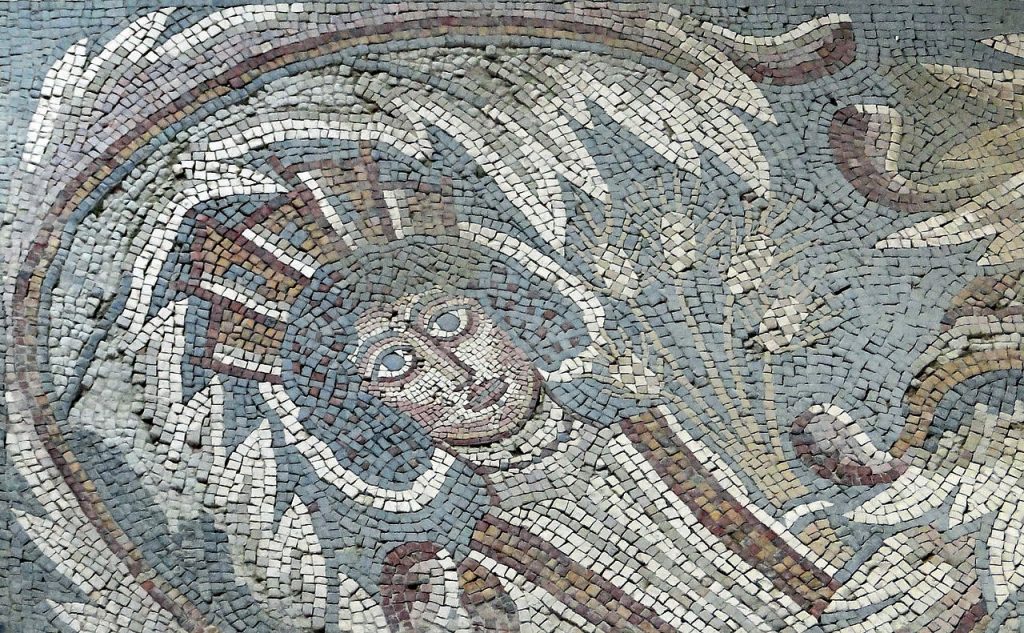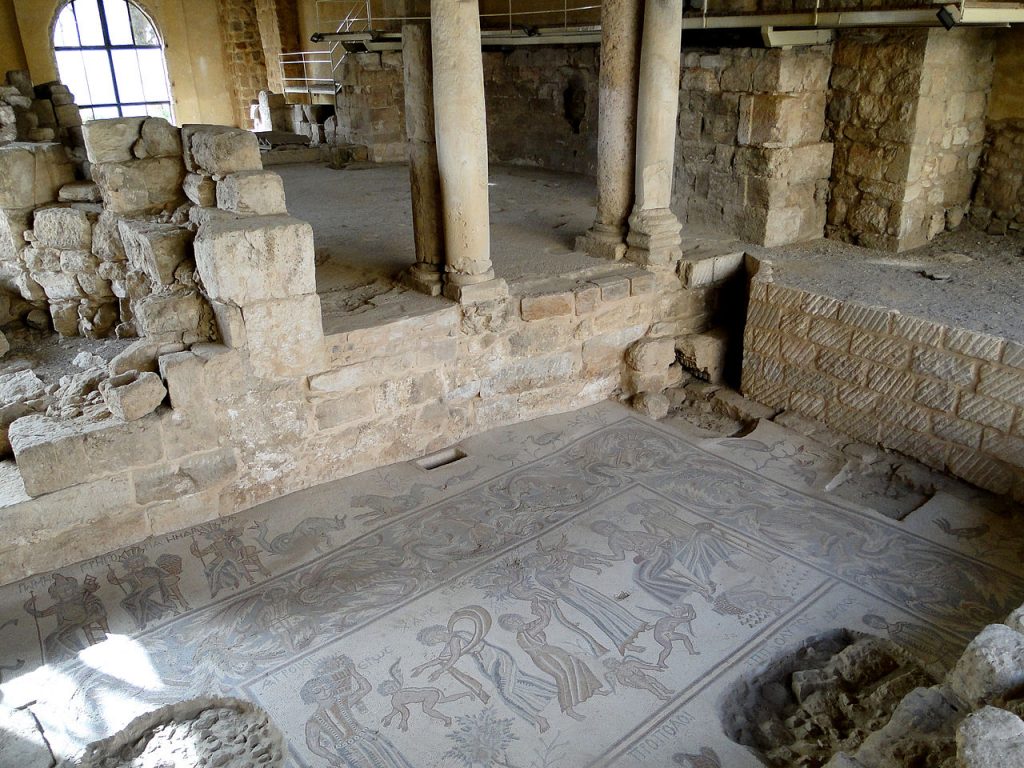Madaba

Madaba (Arabic: مادبا; Biblical Hebrew: מֵידְבָא Medvah) is the capital city of Madaba Governorate in central Jordan, with a population of about 60,000. It is best known for its Byzantine and Umayyad mosaics, especially a large Byzantine-era mosaic map of the Holy Land. Madaba is located 30 kilometres (19 miles) south-west of the capital Amman.
History
The town of Madaba was once a Moabite border city, mentioned in the Bible in Numbers 21:30 and Joshua 13:9.
During its rule by the Roman and Byzantine empires from the 2nd to the 7th centuries, the city formed part of the Provincia Arabia set up by the Roman Emperor Trajan to replace the Nabataean kingdom of Petra.
The first evidence for a Christian community in the city, with its own bishop, is found in the Acts of the Council of Chalcedon in 451, where Constantine, Metropolitan Archbishop of Bostra (the provincial capital) signed on behalf of Gaiano, “Bishop of the Medabeni.”
During the rule of the Islamic Umayyad Caliphate, it was part of the southern district of Jund Filastin within the Bilad al-Sham province.
Greek Orthodox Basilica of Saint George, Madaba
The resettlement of the city ruins by 90 Arab Christian families from Al Karak, in the south, led by two Italian priests from the Latin Patriarchate of Jerusalem in 1880, saw the start of archaeological research. This in turn substantially supplemented the scant documentation available.
The Catholic Church’s list of titular sees uses the spelling “Medaba”, traditional in reference to the ancient bishopric centred on this city, while at the same time referring to the modern city as ‘Madaba”.
In his memoirs, the German Count von Rantzau reports about his friend Sultan Gin-Achmed, Royal Prince of Madaba both studying at Helmstedt University, Germany in 1729 and meeting again in Paris ten years later.

